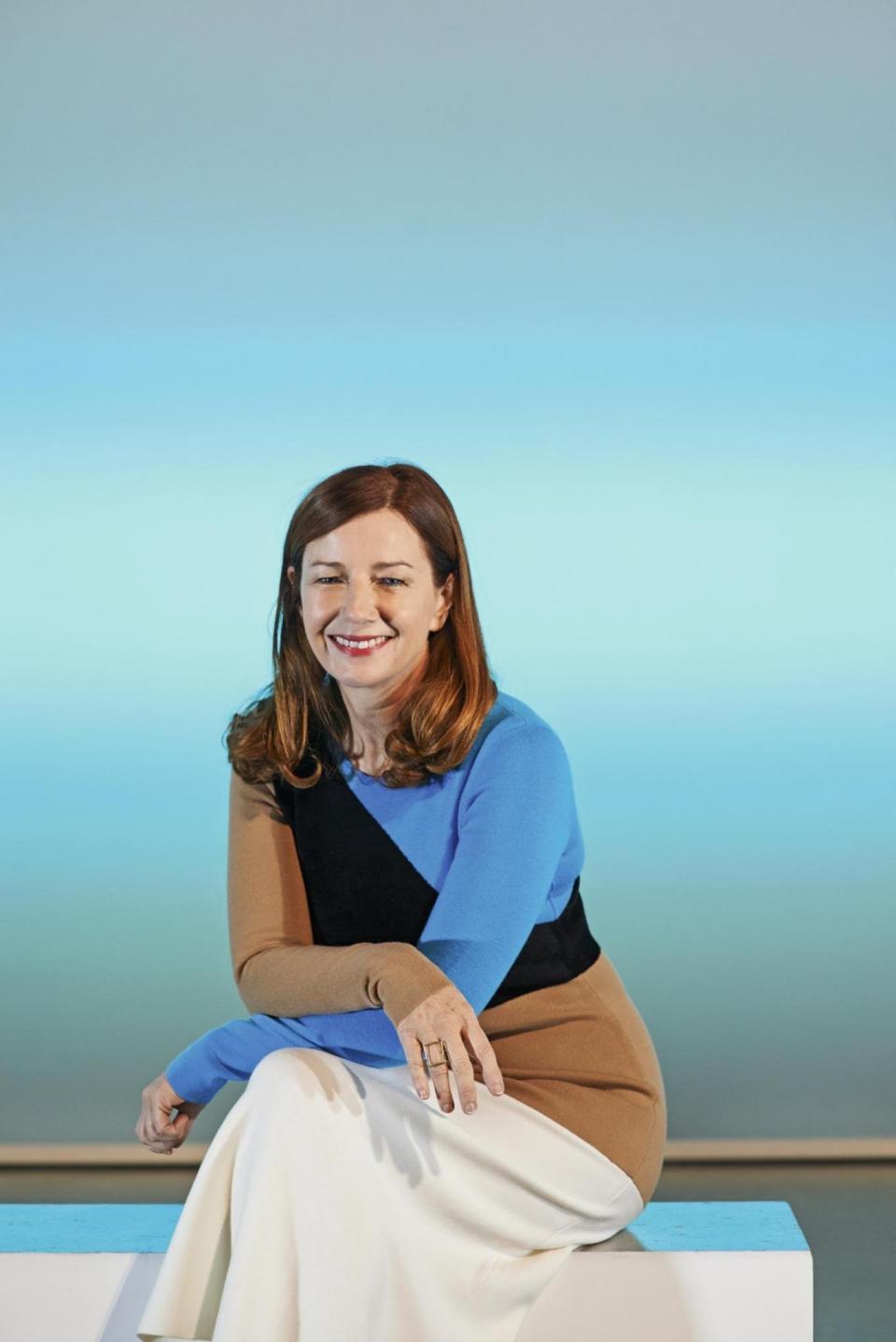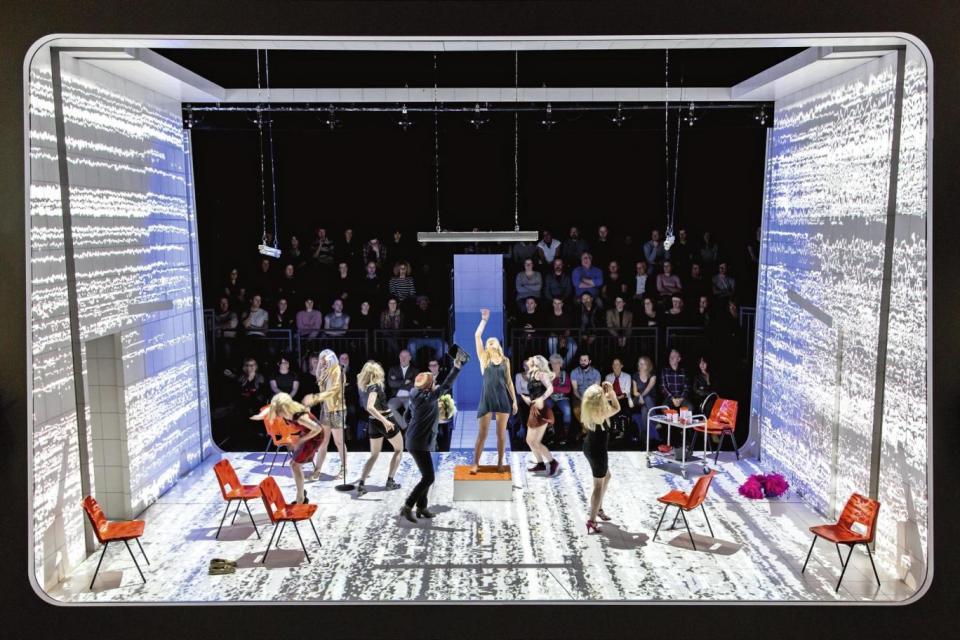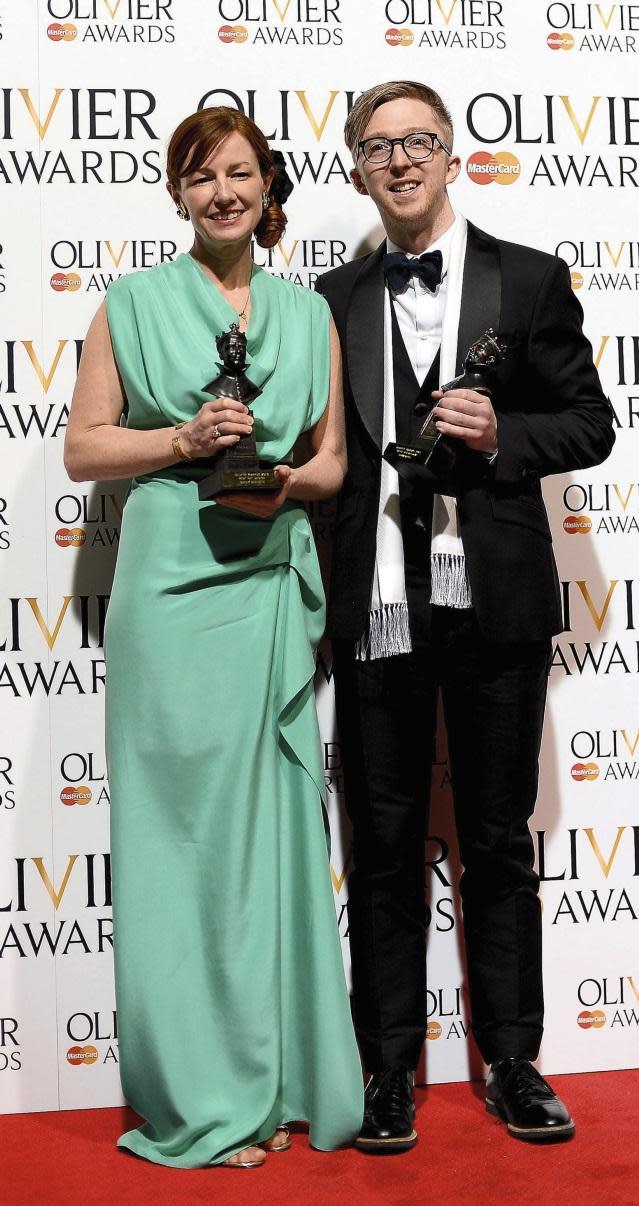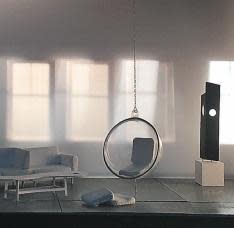Meet Bunny Christie: London's most astonishing set designer

Bunny Christie is not someone to seek out the spotlight. ‘My favourite, favourite place to be is in the wings watching a show that is really working well,’ enthuses the set designer. ‘Shows start to dance when all the cues, actors, crew and stage management move together.’
Yet such is the spectacular nature of her designs that Christie has become a star in her own right. Hers is an astonishing body of work. These are not just sets, but designs that pull audiences into the psychology of a play. The three shows that saw her win her London Evening Standard Theatre Award for Best Design display remarkable range.
For The Red Barn, a David Hare adaptation of a Georges Simenon noir story which finished its run at the National Theatre earlier this year, Christie and director Robert Icke propelled the action from an ophthalmologist’s consulting room to a swirling blizzard, then a fabulous 1960s party at the speed of a camera shutter. Icke wanted to evoke its unsettling Hitchcockian feel. ‘The first scene is an eye examination in which you see right into someone’s eye. Then the very next scene is a massive blizzard. I thought, “Yeah, that’s great”.’ On stage, scenes were presented within a cineframe aperture. Christie’s scrupulously dressed early-1960s sets — depicting a wild party, a weekend cabin, a futuristic all-white Manhattan apartment — were ‘a Tetris’, being moved into position at high-speed by a crew at the top of their game. ‘A brilliant example of a whole other show going on backstage as exciting as what the audience are seeing,’ she says.
In contrast, Simon Stephen’s Heisenberg: The Uncertainty Principle at Wyndham’s Theatre on Charing Cross Road, for which she worked closely with legendary lighting designer Paule Constable, seems deceptively simple: a lightbox reminiscent of the celestial installations of James Turrell. Marianne Elliott, launching her new commercial theatre company, directs Anne-Marie Duff and Kenneth Cranham as a kooky American and much older Londoner forging an unlikely relationship. ‘Simon’s script felt like a kind of allegory,’ says Christie. ‘These people are in limbo, held in air. We were thinking of looking through a microscope at these two moving around a Petri dish.’

And for wunderkind playwright James Graham’s Ink, which recounts when Rupert Murdoch took control of The Sun, she conjured the chaos of a late 1960s newsroom with a teetering ziggurat of desks and typewriters, behind it a backcloth projection of news footage. ‘One of the things I love about theatre is that you get these chances to discover other worlds,’ she says. ‘For Ink, I did a lot of research into 1960s printing processes. For a time, you’re an expert.’
Fittingly, as we chat over coffee at Notes café on St Martin’s Lane, across the road outside the Duke of York’s Theatre, several people are braving the freezing cold to queue for tickets to Ink.
For Christie, ‘the play is the thing’. If a piece does not engage her she will turn down a project. Ideally, she will be as excited by all three of the key elements — the play, the director and the space — as she was for these three and her forthcoming contemporary Julius Caesar with Nick Hytner for his new Bridge Theatre. ‘A lovely time is when I first sit down with the director to talk ideas, to try to find a visual language that rings true.’

Raised in Scotland near St Andrews, where her family had a draper’s shop, Christie came south in the early 1980s to study art at Central (now Central St Martins). There, seeing how much fun the theatre design students were having, she chose her specialism. ‘With something like painting or sculpture you’re usually working solely, whereas in theatre design they were all working together to make things happen.’
Always starting with the play, then discussions with the director, Christie draws on books, cinema and art, scouring the internet and her memory for inspiration. Then she develops her ideas working in 3D with a doll’s house-like box set, which she always lights. ‘Incredibly, the model is still a really crucial part of our kit,’ she says. ‘It’s wonderful how drawn everyone still is to it — builders, painters, engineers… It’s a very human thing.’

Sometimes an ergonomic, minimalist white box and sparse occasional furniture — as with Heisenberg or hit rehab drama, People, Places and Things — seems the strongest statement. For The Curious Incident of the Dog in the Night-Time in 2012, she lobbied for a far higher-tech staging than Simon Stephens’ original script suggested. ‘It was very much written like it could be done in a schoolhall,’ she recalls. ‘I said to Marianne that if we were inside [the play’s hero] Christopher’s head it would be full of maps, computers, science and precision. So that was led by me in a way.’
A wonderful short film, on the National Theatre’s YouTube channel, describes how for The Red Barn, gauze and lighting were used to create a celestial ambiance in the Manhattan penthouse scenes; or, at the country farmhouse, the illusion of snow piled on windows. Strobe lighting, sound and a snow machine created the blizzard. The elegant costumes for Elizabeth Debicki’s Mona came from vintage finds and new designs — one sketched out from a memory of a catsuit worn by her mother in the 1960s. At the National there are costume and props resources to draw on, but that production’s minimalist, mid-century aesthetic helped keep it in budget. ‘A lot of the stuff that maybe looked hi-tech and magical was actually really low-tech. So when things were moving around it was because the crew were pushing things around. The whole of the stage was full of boxes of different spaces that had to be manoeuvred like a game of Tetris. And we were kind of controlling what the audience could see cinematically.’

She is close to Elliott, whose production of Sondheim’s Company she will design next year. Her joy in the success of The Curious Incident of the Dog in the Night-Time is heightened by the happy memories of working on it. ‘I knew at the time it was really special: that the whole team was singing with energy and imagination.’ There is also pride in audiences’ response to People, Places and Things, for which she conceived a hard-working ‘hose-down’, off-kilter clinical set for another regular collaborator, director Jeremy Herrin. ‘The way in which that piece of work rings true to people is astonishing,’ she says.
She designs alone but has two longstanding assistants. ‘There’s a nice mix of the gregarious and the solitary. You have to be quite free visually in your imagination, but also practical because you’re working to a budget and specific spaces.’

‘I have overall responsibility for every element of the visual on stage,’ she adds. ‘From light switches to the knives and forks, a vase, the typewriters… there won’t be anything on the set, no matter how small, I won’t have signed off on.’
Does that make her a control freak? ‘A little bit, yeah — but I don’t live in a design haven, that’s for sure.’ Though generous about discussing her practice, she is reticent about revealing where she lives — East Finchley — her age, anything much about her son and daughter or their actor father, or even the origins of her nickname. ‘I’m being enigmatic,’ she says a tad apologetically, but still firmly.
We walk to Wyndham’s for ES’s shoot, where she heads not for the theatre’s entrance but its stage door. And there we part in her happy place — the wings.

 Yahoo News
Yahoo News 
